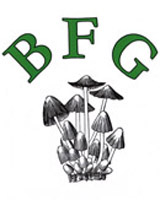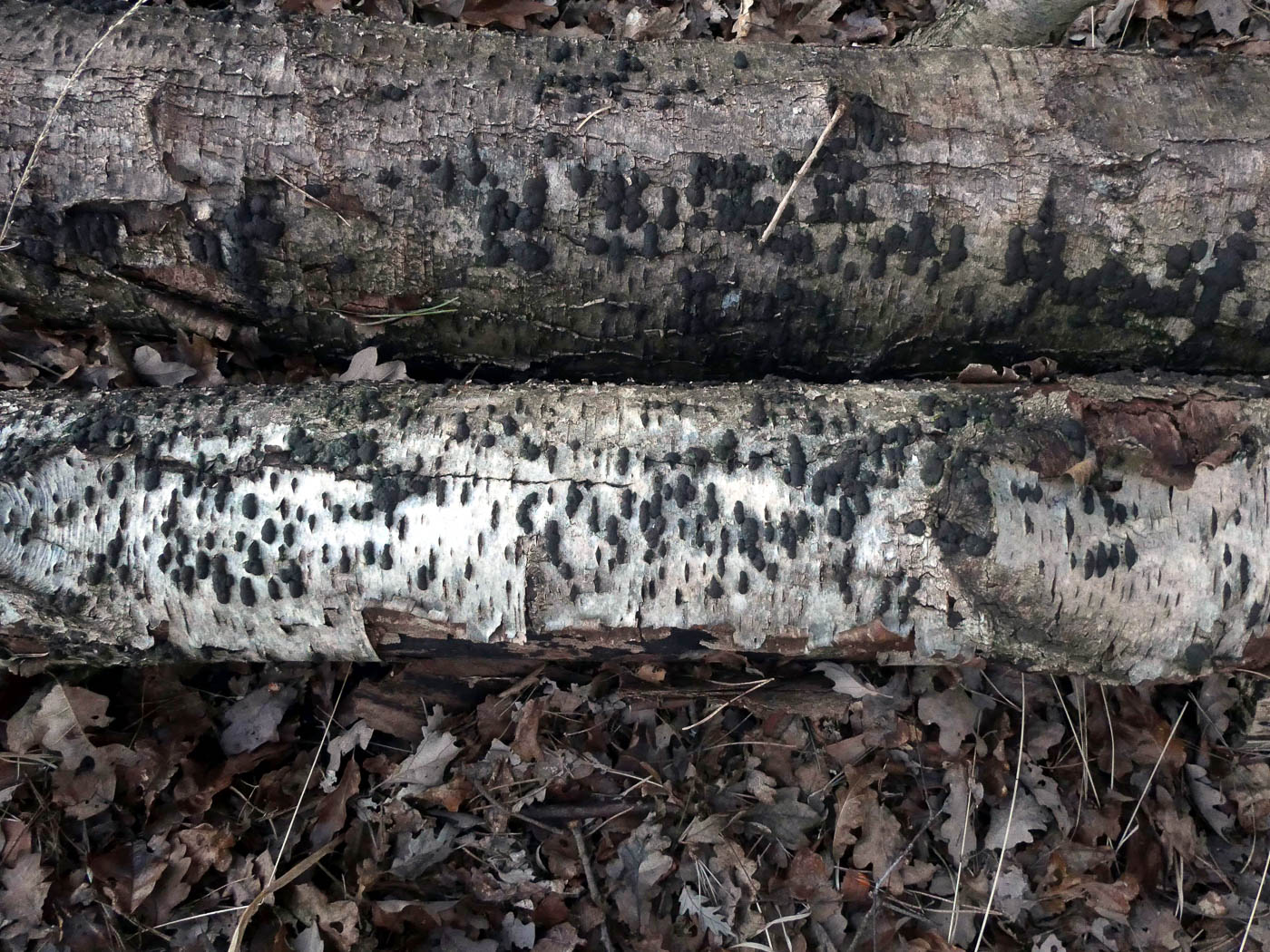
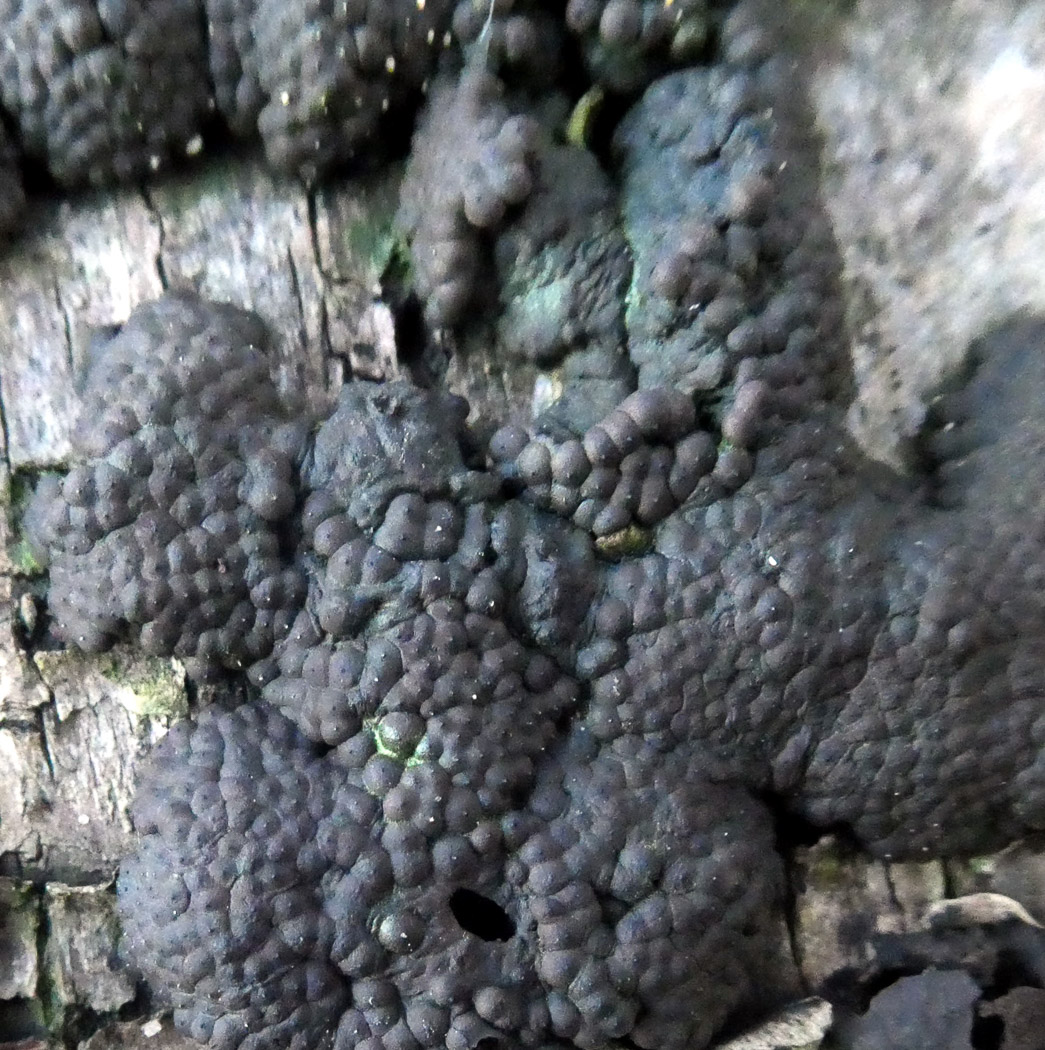
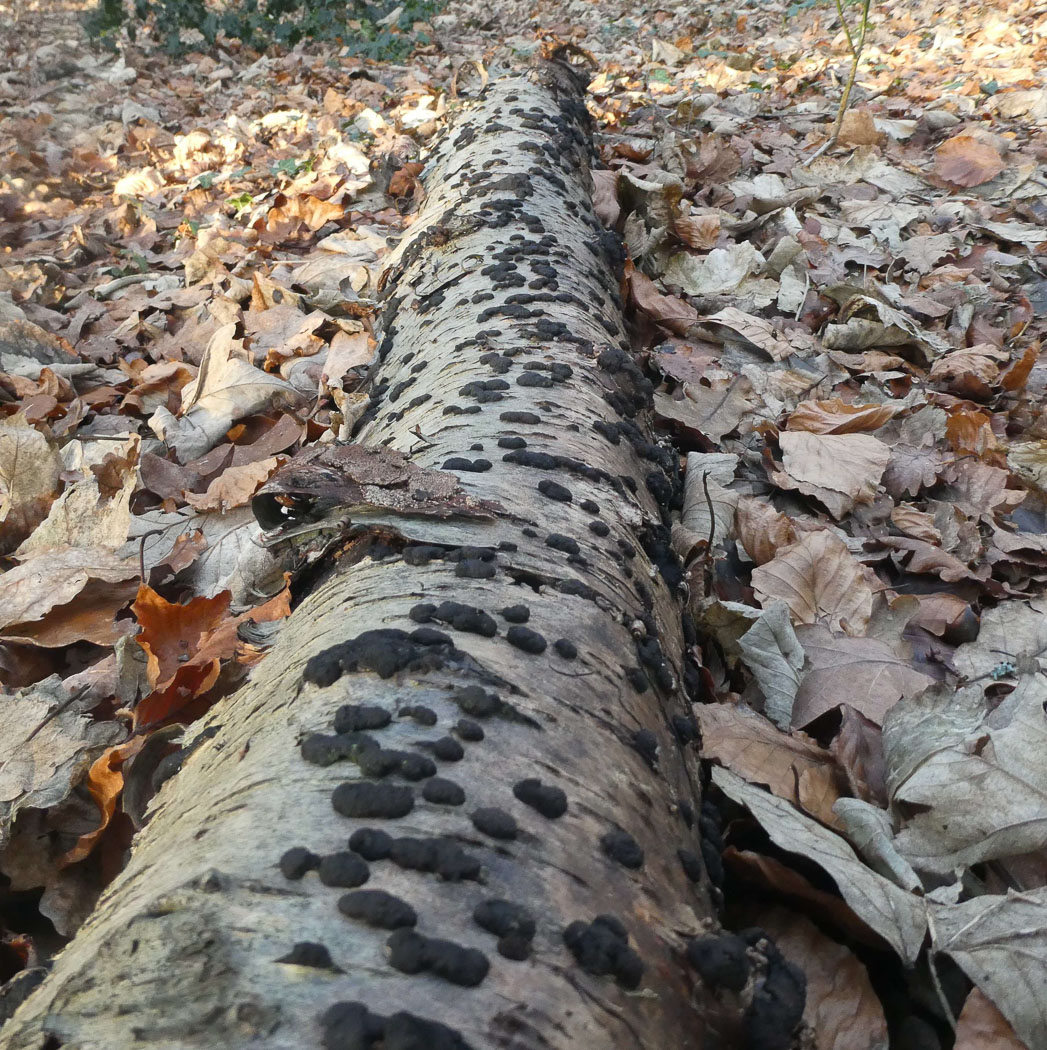
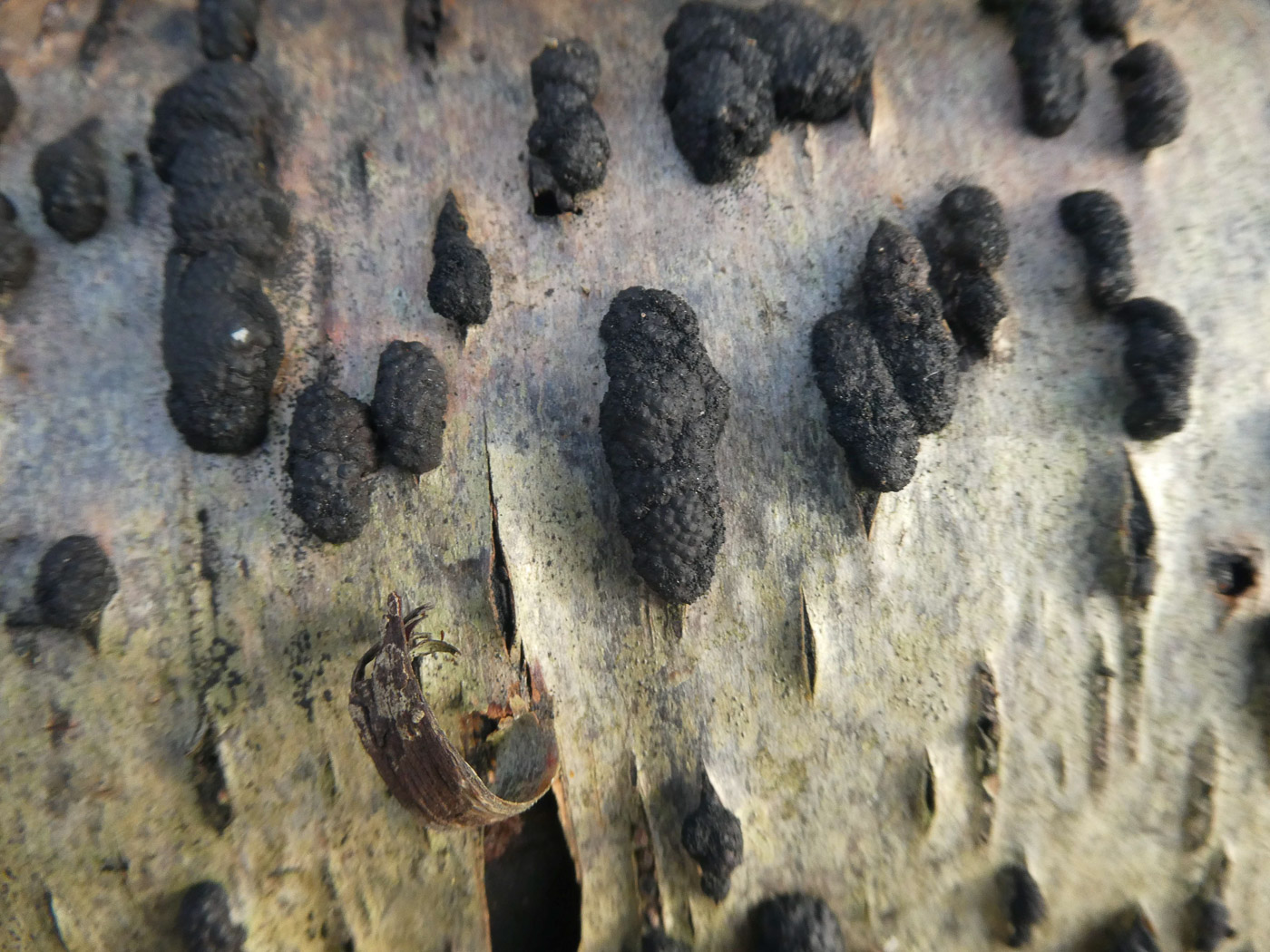
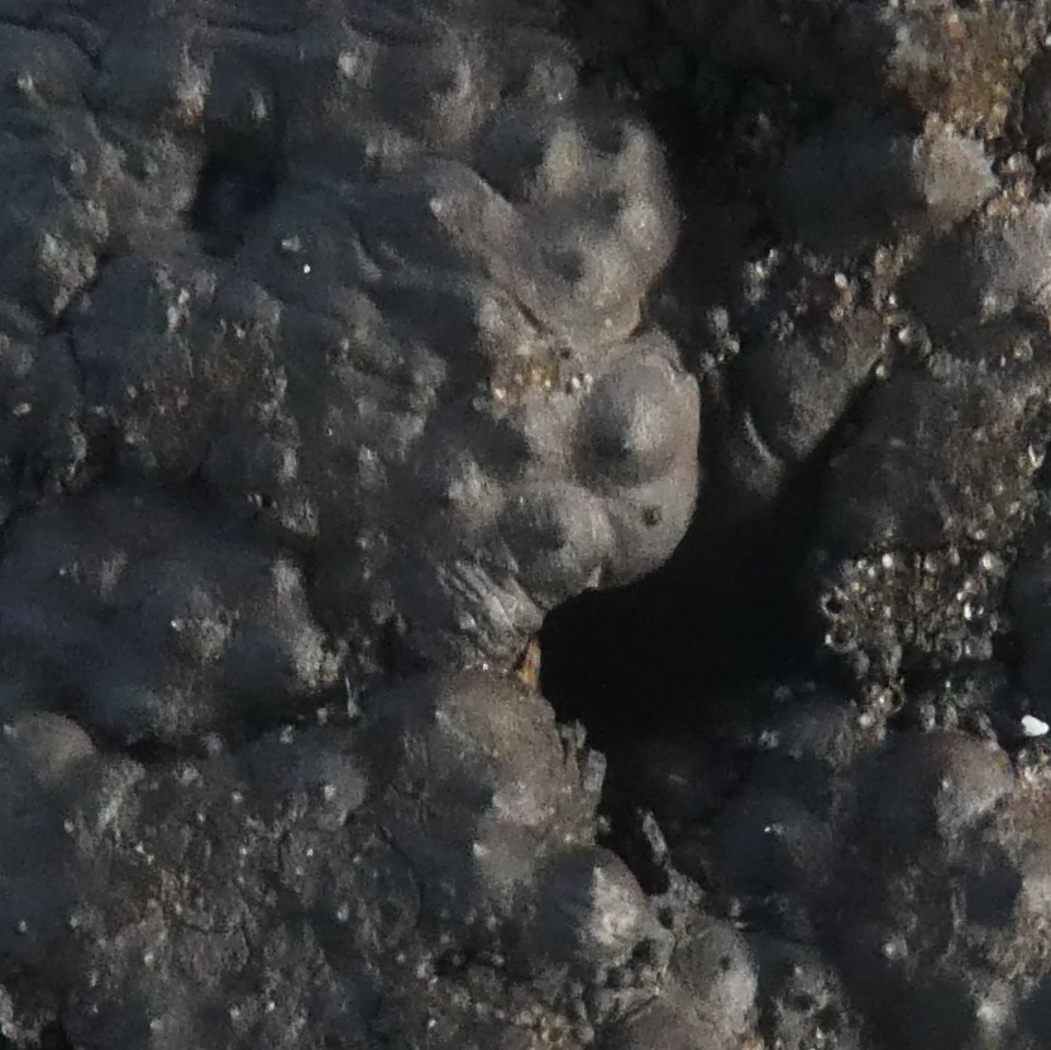
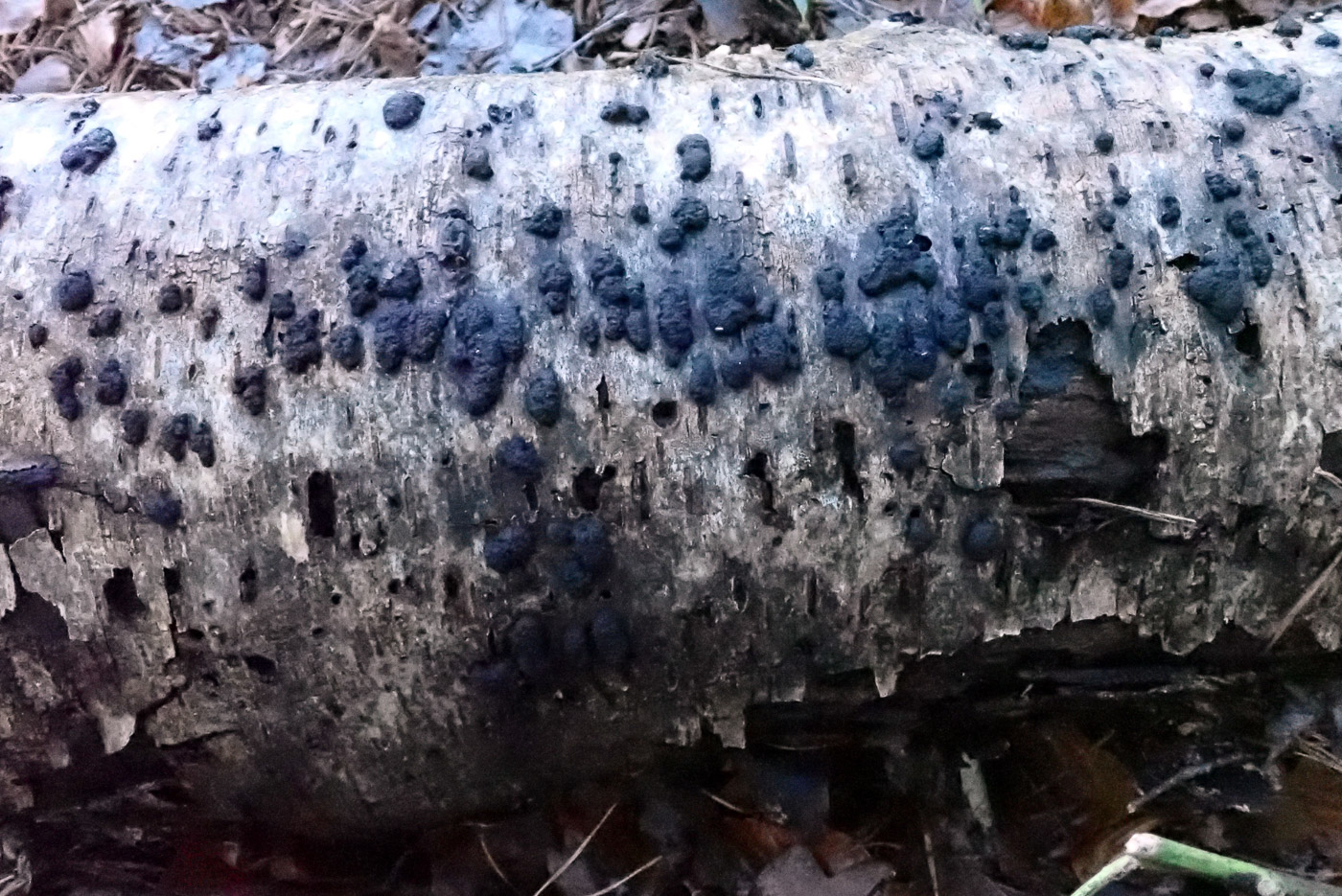
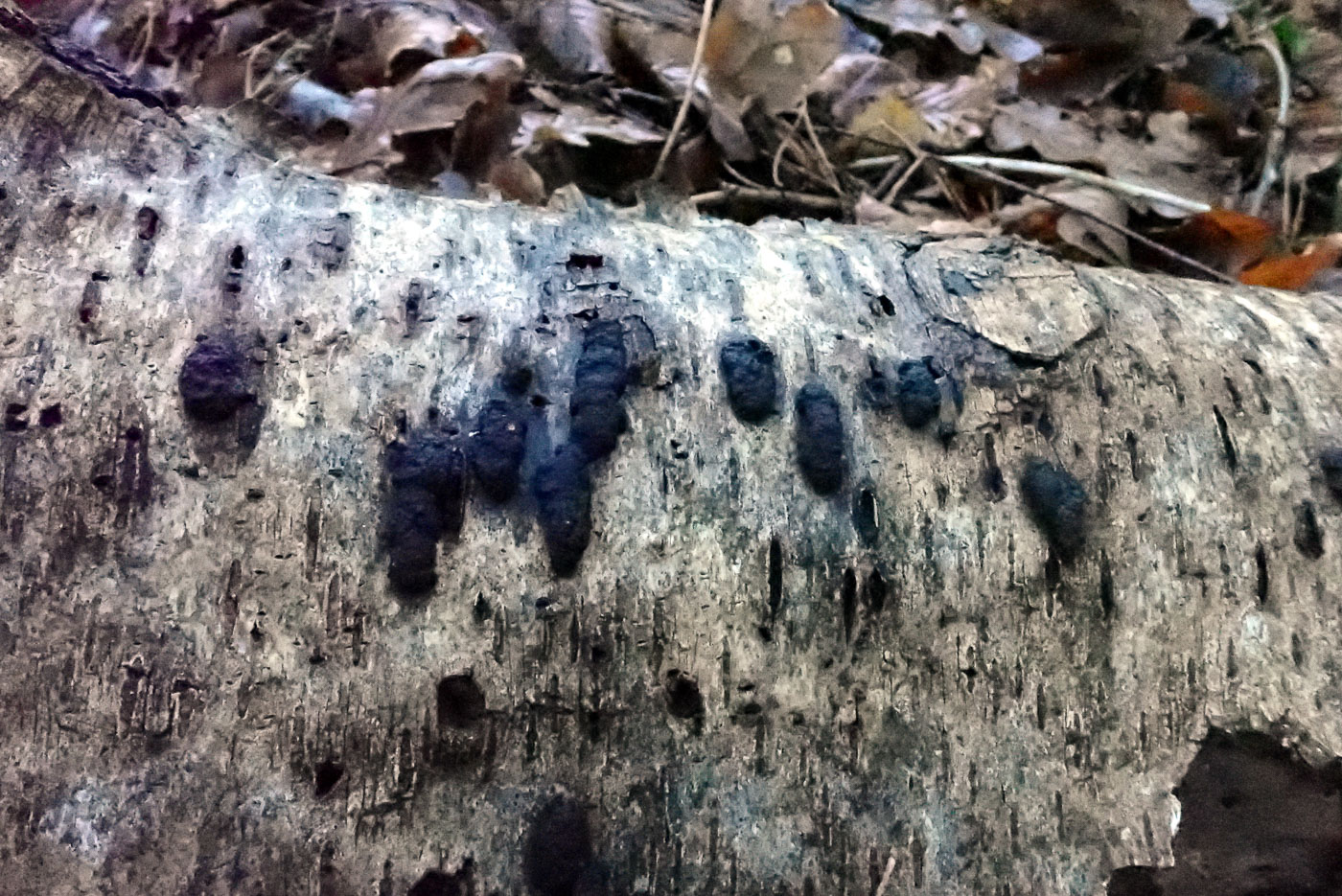
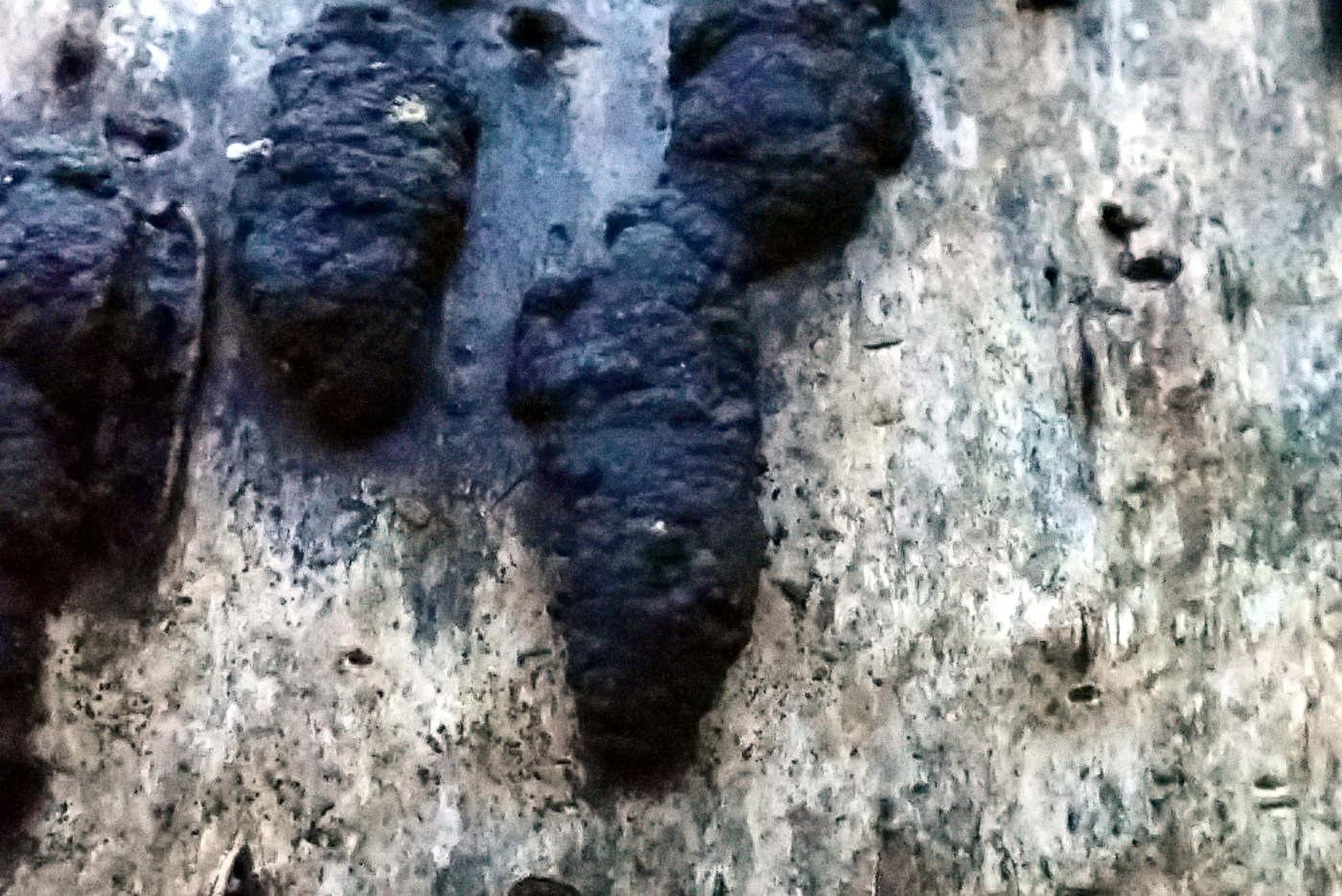
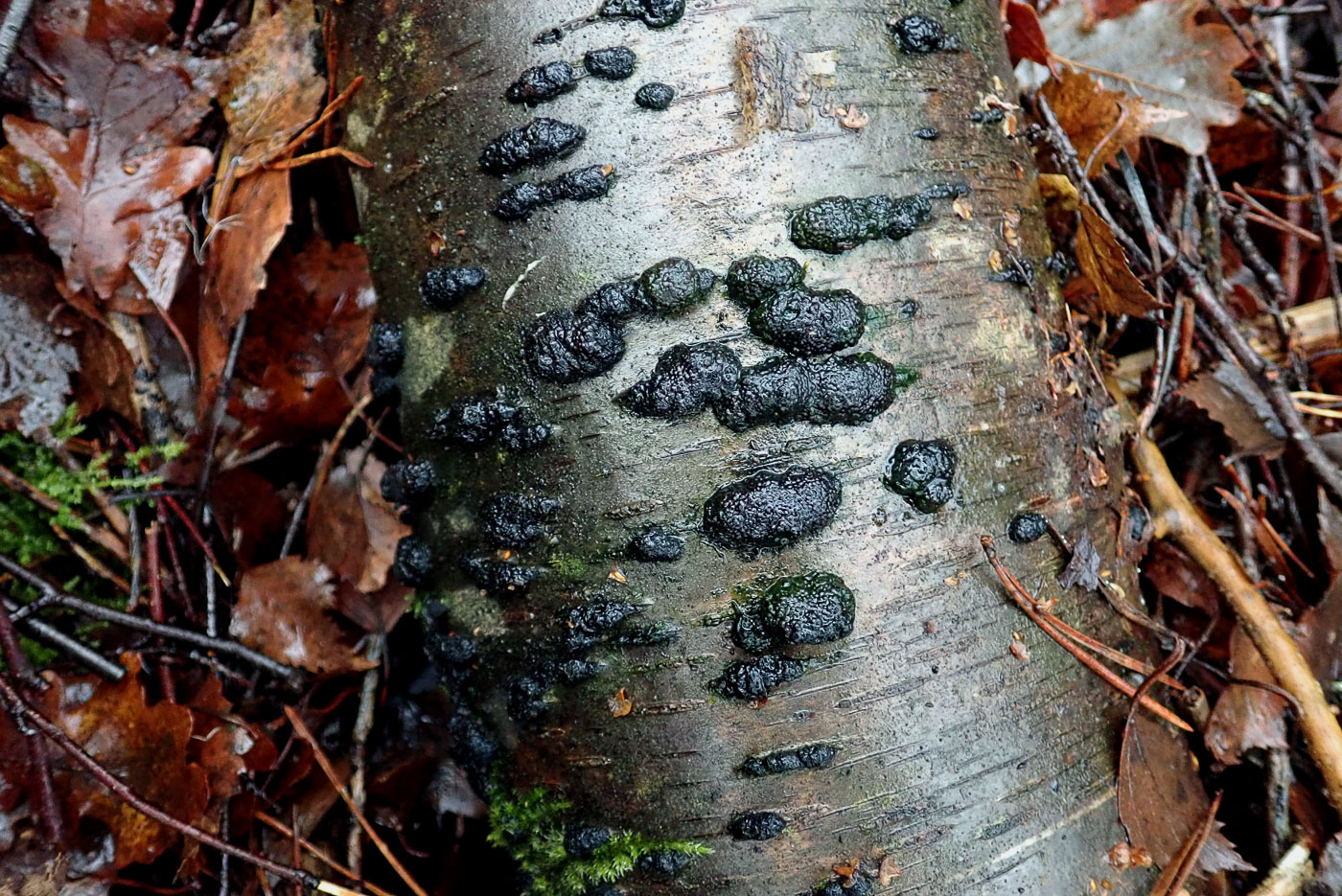 |
Jackrogersella multiformis (Birch Woodwart)
Jan 15, 2024. At Stoke Common Jim Wills noticed this colony of Pyrenomycetes on felled Birch though was unsure of the species, suggesting it might be J. cohaerens. Penny, however, questioned this as his photos matched exactly her concept of J. multiformis (previously in genus Annulohypoxylon and before that in Hypoxylon). Checking a variety of sources confirmed that J. cohaerens occurs on Beech along with H. fragiforme whereas today's species is very common on Birch, occasionally on Alder. Typical is the somewhat elongated rather than round individual fruitbodies as seen here in photo 1.
Jan 13, 2023. In woodland near Chalfont St. Peter Jim Wills noticed this common Pyrenomycete on fallen Birch. Recently split from the genus Hypoxylon - where the equally familiar H. fragiforme (Beech Woodwart) and H. fuscum (Hazel Woodwart) remain - it is easily separated from them in the field by its different shape seen clearly in photo 2: more elongated rather than round and in places merging together. Each species is host specific as described in their common names which also helps with ID.
Jan 17, 2022. In Burnham Beeches Penny found good examples of this common ascomycete - one of the hard crusty pyrenomycetes which will be more familiar under its old genus name of Hypoxylon (which incidentally is still in place for the equally common H. fragiforme (Beech Woodwart) and H. fuscum (Hazel Woodwart). Today's species is host specific to Birch and easily recognised by its lumpy elongated habit as seen here rather than forming colonies of round fruitbodies typical of other woodwarts. The surface is covered in tiny holes (ostioles) through which the spores are expelled, and when fresh it is reddish brown but gradually becomes darker then black.
NAME CHANGED from Hypoxylon multiforme
Nov 30, 2020. It seems odd that this very common species has been missing from our list, but today in the Mire at Burnham Beeches it turned up on a fallen Birch trunk, found by Penny C. It can be separated in the field from other similar Woodwarts by (a) its occurrence on fallen Birch and (b) its shape: mainly cylindrical rather than round and typically in lines as seen here.
|


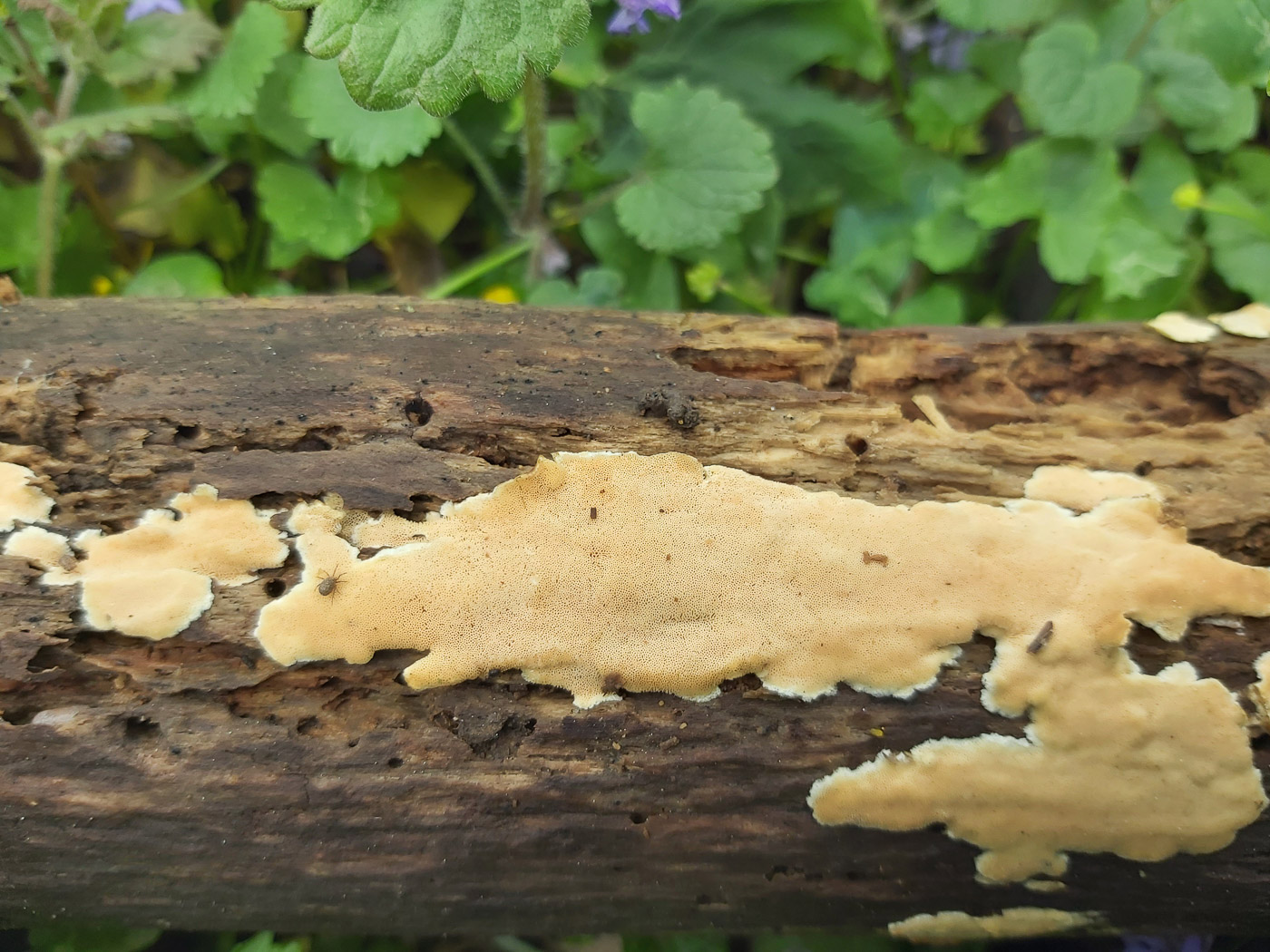
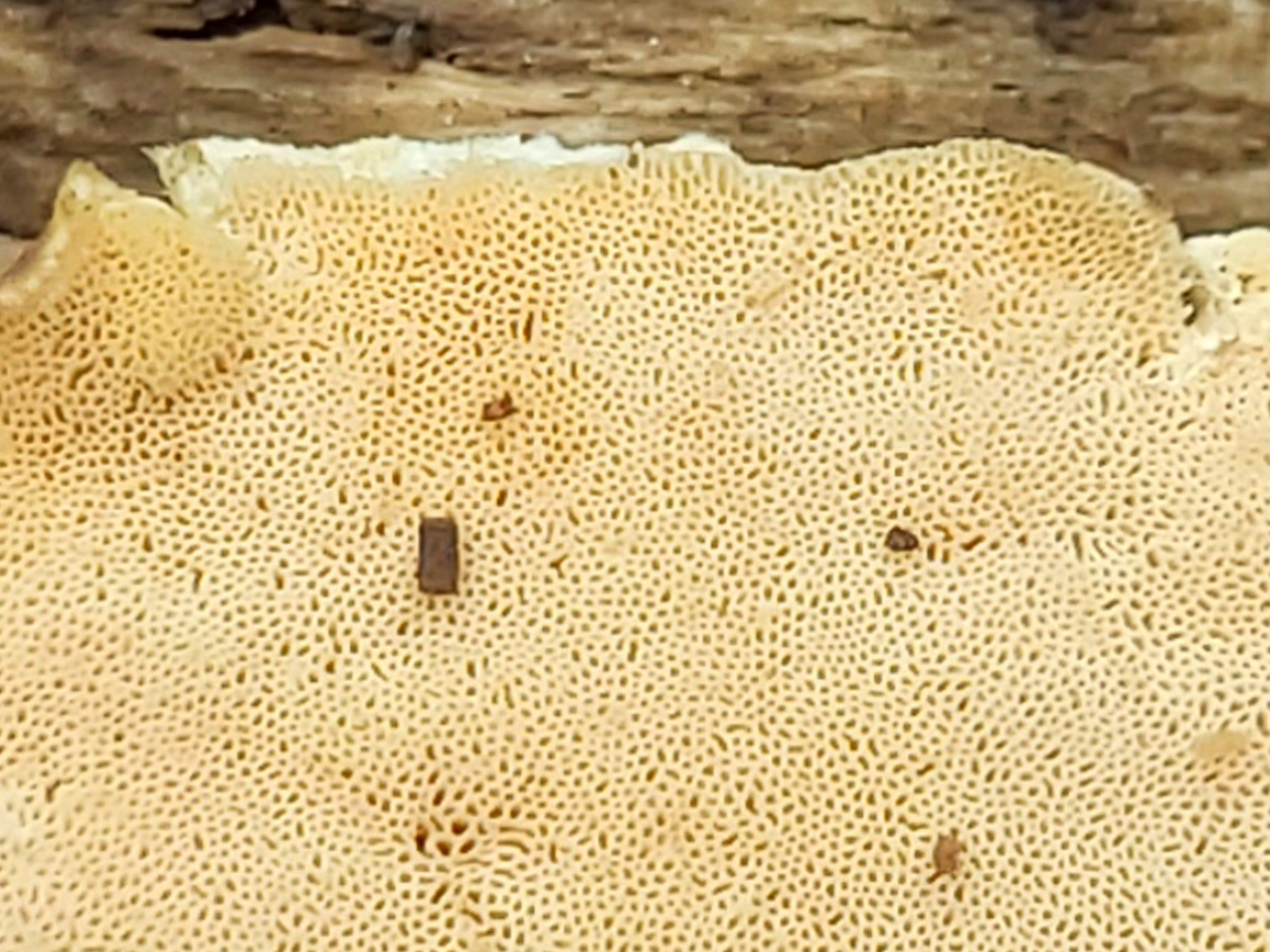 |
Junghuhnia nitida (a Corticioid with no common name) 
Mar 18, 2023. In Burnham Beeches Russell Ness found this fresh example on fallen deciduous wood. This is a further species which at first glance is quite similar to Byssomerulius corium and Steccherinum ochraceum (compare with the former on March 19th above) in that it is flat, buff pinky orange and with a white fringe. The surface texture, however, is very different and distinctly poroid rather than smooth to wrinkled (as in B. corium) or finely toothed (as in S. ochraceum) - a hand lens is best here. All three occur on fallen deciduous woods though today's is probably the least often recorded.
May 9, 2021. Jesper Launder found this quite distinctive species growing on fallen deciduous wood (probably Ash or Sycamore) in woodland between Chalfont St. Giles and Chalfont St. Peter. It can form large patches and can be recognised in the field by its distinctly poroid surface (seen in photo 2) which is ochraceous pinky buff, having a contrasting white margin. It can be found on various deciduous woods, particularly Beech, occurring mainly but not exclusively in autumn - not common but we have quite a few records in the county.
|

